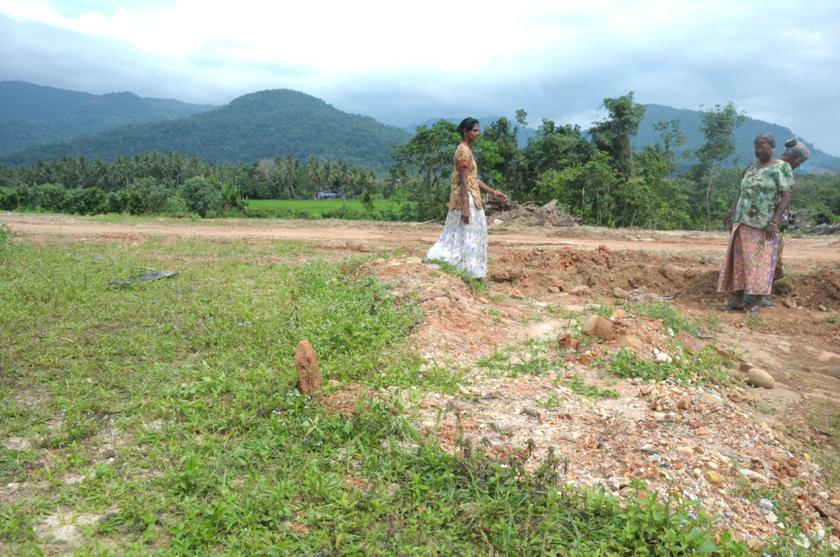LEMBAH BUJANG, Dec 3 — As Kedah scrambles to salvage the ancient Hindu temple ruins in historical Lembah Bujang destroyed by a developer, a historian believes a larger number of the structures known as candi have likely been pulverised before they could be fully documented or unearthed.
Datuk V.Nadarajan, who has been conducting in-depth research into the early civilisation in Lembah Bujang, said he discovered several candi on his map that were yet to be excavated or reconstructed in the Sungai Batu area, had been demolished, like candi number 11, and paved over — in the name of development.
“When I went searching for other candi in this area, villagers here told me that the developers had cleared the land and thrown away the debris after digging out the ruins of several candi,” said the author of “Lembah Bujang: The Wonder That Was Ancient Kedah”.
A candi, short for candigarh, has been described as a place of worship with elements of either Hinduism or Buddhism; these places of worship found in the Kedah valley are believed to date back to the 8th to 13th century.
Lembah Bujang is also believed to be the foundation for the rise of the Malay kingdom in Southeast Asia, and the region’s foremost entreport and trading centre in ancient times.
Candi number 11 was one of 10 temple structures found in Lembah Bujang and reconstructed by the Museum Department in 1974.
Nadarajan, who chairs a group of history buffs called Bujang Valley Study Circle, could not confirm the number of candi that were destroyed as he said the temple ruins have yet to be excavated and documented.
“There are probably a lot of other temple ruins that remain unknown as Lembah Bujang covers a very wide expanse of land,” the 60-year-old said.
The former Sungai Petani municipal councillor warned that if no stern action is taken this time, it will become a norm for developers to remove and destroy these ancient links to history where signs of early Malay civilisation can be found.
“These ruins are links to the rich melting pot of a Malay kingdom where this area used to be a trading port with traders from China and India conducting trade with the local Malays here,” he said.
Nadarajan lamented that many archaeological sites in Lembah Bujang, some with candi bearing Hindu and Buddhist influences, were not documented or protected.
“In a recent study by Universiti Sains Malaysia, they found there are 127 archaeological sites in Kedah and about 90 candi in Lembah Bujang,” he told The Malay Mail Online over the phone.
“There are many other temple ruins that were not documented so these could be destroyed without anyone else knowing,” he said.
Following the destruction of candi number 11, Nadarajan suggested the Kedah state government direct the developer to rebuild the whole structure.
Yesterday, Kedah asked the developer, who was clearing the land for development, to temporarily stop work pending investigations into the issue that has drawn sparked outrage nationwide.
Nadarajan said he hoped the destruction would serve as a reminder to enhance efforts to document the many archaeological sites in Lembah Bujang.
 “The government should treat this place as a rich historical site and do all that’s possible to document all of the remaining sites here and protect it from harm,” he said.
“The government should treat this place as a rich historical site and do all that’s possible to document all of the remaining sites here and protect it from harm,” he said.
Nadarajan said Lembah Bujang’s rich history could boost tourism in the northern state.
He said the archaeological ruins in the valley were from the 8th century, before Islamisation came to Malaya.
The former history teacher said candi number 11 is one of the larger candi in Lembah Bujang that measured 150-feet wide by 250-feet deep.
Despite public fury at the demolition, the authorities are not seen to have made an effort to preserve and conserve the remaining ancient civilisational structures in Lembah Bujang.
The Lembah Bujang Archaeological Museum pushed the responsibility to the National Heritage Department.
“The candi sites used to be under our purview but after 2006, other than the four candi reconstructed at our museum site, all the candi are the National Heritage Department’s responsibility,” a museum official said.
The official, who declined to be named, added that in all this time, he has not seen any officials from the National Heritage Department visit any of the candi sites.
The Director-General of the National Heritage Department, Datin Paduka Prof Siti Zuraina Abdul Majid, could not be reached for comment as she is currently abroad for the month; other officials in her department declined comment.




















